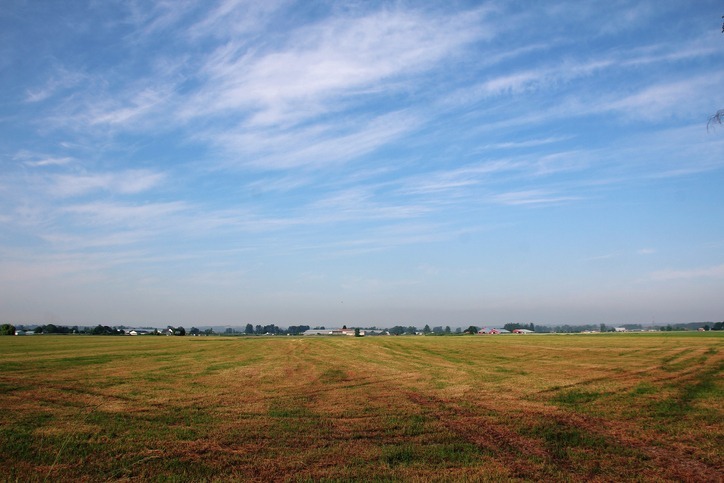When it comes to real estate and land development, there are various terminologies used to describe different types of properties. While you may believe estate and acreages for sale typically mean the same thing, there are two that have separate qualities that make them diverge. Two commonly used terms are “acreage” and “estate lot.” Although the similarities are explicit, there are distinct differences between the two.
Explore the characteristics, features, and nuances that set acreages and estate lots apart.
Defining Acreage and Estate Lot
To understand the difference between an acreage and an estate lot, let’s start by defining each term:
Acreage:
Acreage refers to a larger plot of land typically measured in acres. It generally includes several acres of land, ranging from a few acres to several dozen acres or even more. Acreages for sale are commonly found in rural or suburban areas, offering more space, privacy, and flexibility for various uses.
Estate Lot:
An estate lot, on the other hand, is a single, larger-sized lot within a development or subdivision. Estate lots are often situated in upscale neighbourhoods or exclusive communities characterized by their grandeur, prestige, and high-end amenities. They are generally larger than standard residential lots and are designed for luxury homes.
Size and Dimensions
One significant difference between acreages and estate lots lies in their size and dimensions:
Acreage:
Acreages typically consist of multiple acres of land, as the name suggests. The size of an acre can vary slightly depending on the specific measurement used (e.g., statute acre or international acre), but it is generally equivalent to 43,560 square feet. Acreages can range from a few acres to several hundred acres or more, providing ample space for various purposes such as farming, recreational activities, or building multiple structures.
Estate Lot:
Estate lots are typically smaller in size compared to acreages. While there is no strict definition or standard size for an estate lot, they are usually larger than the average residential lot. Estate lots can range from around half an acre to a few acres, offering enough space to accommodate larger, custom-built luxury homes and provide privacy and exclusivity.
Use and Development
Another distinction between acreages and estate lots lies in their use and development possibilities:
Acreage:
Acreages are often favoured by those seeking more extensive land for various purposes. They provide the opportunity for agricultural activities, such as farming or ranching, and offer ample space for recreational pursuits like gardening, horseback riding, or creating private retreats. Acreages may also be divided into smaller parcels for residential development, with multiple homes or structures spread across the land.
Estate Lot:
Estate lots are typically designated for the construction of high-end, custom-designed homes. These lots are carefully planned and developed to create an exclusive neighbourhood or community of luxury residences. Estate lot developments often feature upscale amenities such as gated entrances, private roads, landscaping, and community facilities like parks or trails. The focus is on creating an environment of luxury, privacy, and elegance for homeowners.
Location and Surroundings
The location and surroundings of acreages and estate lots can also differ:
Acreage:
Acreages are commonly found in rural or suburban areas, away from densely populated regions. They offer a more tranquil and secluded setting, surrounded by open spaces, natural landscapes, and possibly neighbouring farms or rural properties. Acreages provide a sense of serenity and escape from urban life, making them attractive to those seeking a quieter and more expansive living environment.
Estate Lot:
Estate lots are often situated in desirable locations, including upscale neighbourhoods or prestigious communities. They can be found in both urban and suburban areas, often in proximity to amenities like golf courses, country clubs, or waterfronts. Estate lot developments are designed to provide a luxurious lifestyle, combining proximity to urban conveniences with a serene and exclusive ambiance.
Pricing and Affordability
When comparing acreages and estate lots, pricing and affordability can be significant factors:
Acreage:
Acreages can vary widely in price depending on factors such as location, size, accessibility, and any existing infrastructure or amenities on the land. While some acreages may be more affordable, particularly those located in remote or less developed areas, larger and well-located acreages can command higher prices. The cost of maintaining and developing the land should also be considered.
Estate Lot:
Estate lots are often associated with higher price tags due to their exclusive nature, desirable locations, and upscale amenities. The cost of land, as well as any additional fees or requirements set by the developer or homeowners association, can contribute to the higher price point. Custom-built luxury homes constructed on estate lots can further add to the overall investment required.
In summary, the main differences between acreage and an estate lot lie in their size, use, development possibilities, location, and pricing. Acreages offer larger plots of land with more flexibility for various purposes, while estate lots provide exclusive and prestigious settings for luxury homes. Understanding these distinctions can help individuals make informed decisions when considering a land purchase or residential development.

